Several months ago, I came across a friend who seemed utterly exhausted. He had been putting in long days, missing meals, and barely getting any rest. The cause wasn’t an illness—it was work. He was trapped in a toxic work culture that gradually consumed his health and self-esteem. Unfortunately, his experience is common.
Research indicates that workers trapped in a toxic workplace culture are more at risk of experiencing burnout, stress-related diseases, and even depression. Indeed, the same survey revealed that almost 1 in 5 employees have quit a job due to a toxic environment at work. It is troubling because it is not only that workers leave companies, but they leave because of the need to survive.
A toxic work culture isn’t about having a demanding boss or a hectic season at work. It’s an unhealthy, persistent pattern of behavior and practice that harms people’s well-being. From relentless micromanaging to lack of respect, this culture subtly erodes physical as well as mental health.
Let’s dissect how to identify the toxic workplace culture, learn its impact, why businesses usually turn a blind eye to it, and, more importantly, what we can do to rectify or leave it.
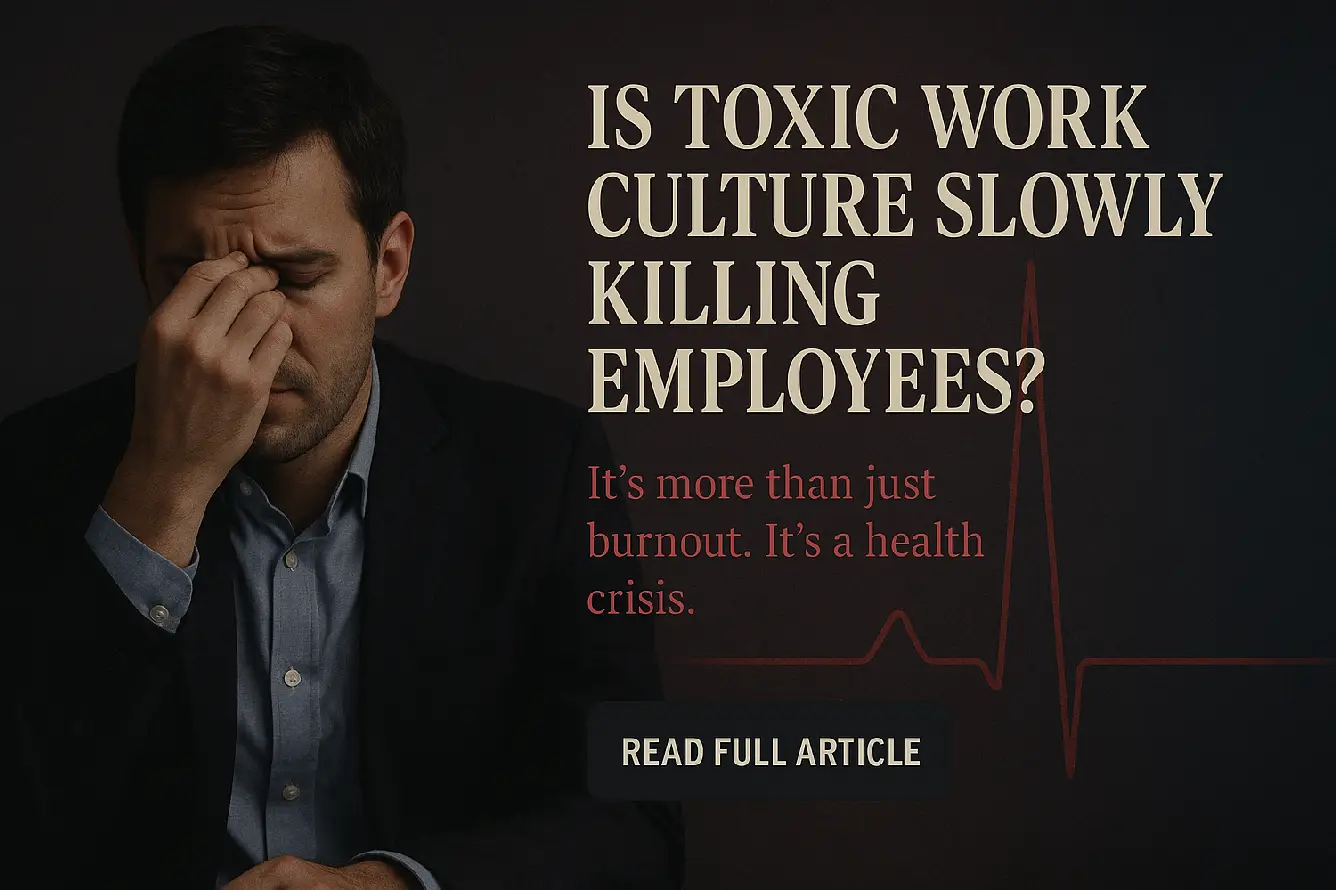
Signs of a Toxic Work Culture
One of the toughest aspects of coping with toxic work is acknowledging that you are in one. The issue is that lots of unhealthy behaviors in the workplace get normalized, and everyone believes “this is just how it is.” Let’s run through some of the largest toxic work culture signs that must never be overlooked.
-
High Turnover Rate
- If employees are leaving the company every few months, it’s a cause for concern. Regular resignations indicate that employees do not feel safe, valued, or supported. High turnover is one of the easiest indications of a toxic culture, since healthy workplaces tend to retain workers.
-
Lack of Work-Life Balance
- Are you working long hours at night or on weekends with no time for yourself? If the culture is such that it glorifies working too much rather than honoring boundaries, that’s a huge toxic workplace environment problem. Your work should never feel like it is consuming your life entirely.
-
Poor Leadership
- Leaders set the tone. But when managers micromanage, intimidate, or conceal information, it fosters mistrust. Ineffective leadership is perhaps the most destructive toxic work culture sign since it has a direct impact on each and every member’s morale.
-
Fear-Based Environment
- If individuals are afraid to speak out, share feedback, or disagree with managers, the workplace has become a toxic work environment. Workers must never be placed in fear of losing their jobs for giving opinions.
-
Cliques and Ostracism
- Unhealthy office politics, nepotism, and exclusion from major choices surface in numerous toxic workplaces. When cliques dominate the workplace, it results in divisions, isolating others as demotivated.
-
No Recognition or Growth
- Where workers put in effort but are not recognized for it, they get frustrated. An environment with no development, recognition, or learning is one of the most obvious indications of a toxic culture. Individuals desire to grow and develop, and if their workplace does not provide for it, they will burn out or quit in the long run.
These toxic workplace environment indicators, if left unaddressed, can silently harm both people and institutions in the long term.
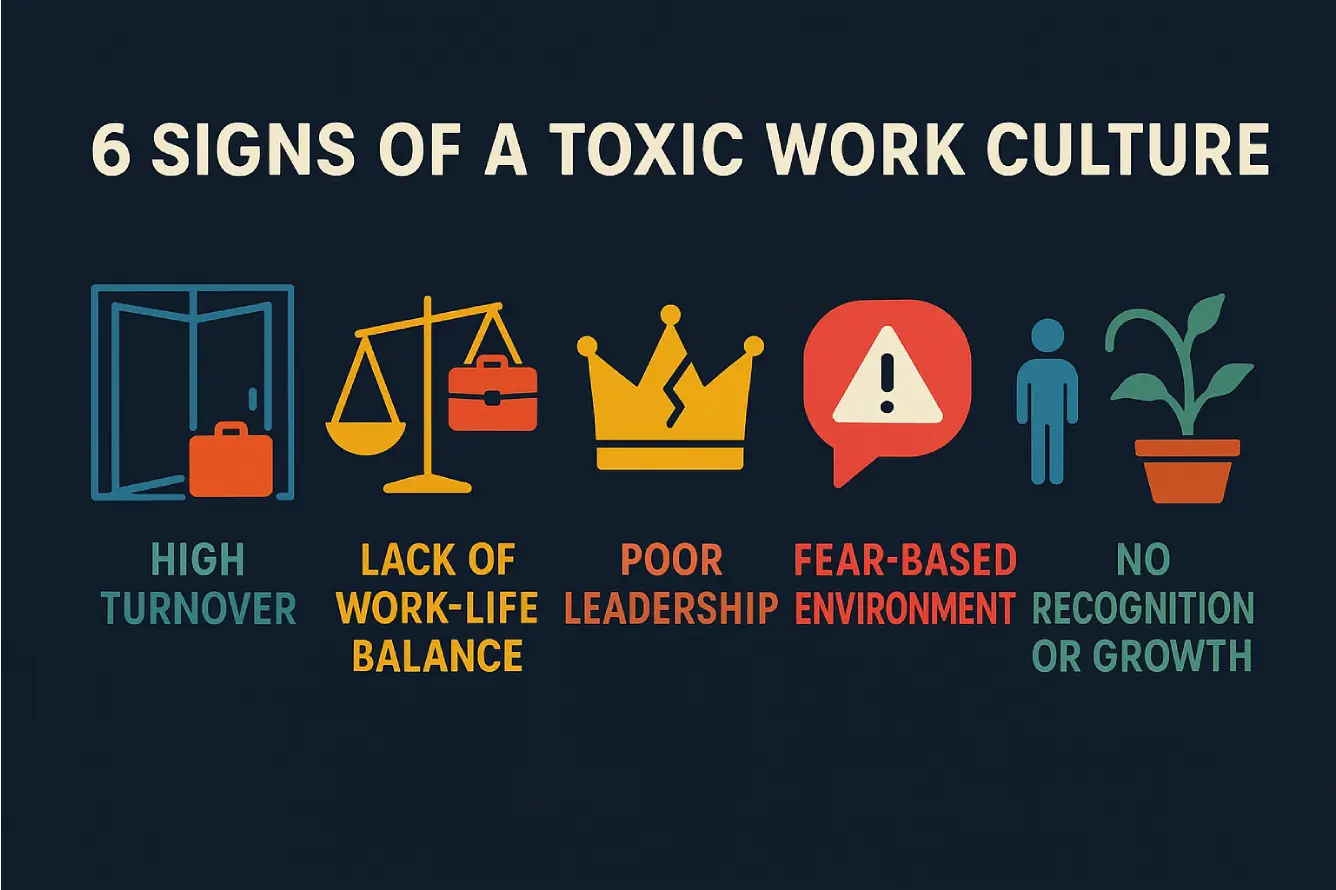
How Toxic Work Culture Impacts Employees
Living in a toxic corporate culture has profound effects. It does not merely remain within the office; it follows an individual’s home, influencing their well-being, social relationships, and even potential future professions.
-
Mental Health Impact
Ongoing pressure and negativity result in burnout, depression, and anxiety. Most individuals in a toxic workplace feel hopeless, disconnected, and emotionally drained.
-
Physical Health Impacts
Long-term stress manifests itself physically. Employees tend to suffer from sleep disorders, headaches, high blood pressure, and even suppressed immunity when trapped within a toxic corporate culture. Over time, this stress can contribute to severe long-term health issues.
-
Career & Productivity Decline
Creativity dies in negativity. Individuals in a toxic work environment lose their energy and concentration. They stop delivering their best because they no longer believe in the value of their work. This leads to poor morale, low productivity, and wasted talent.

Why Companies Ignore or Sustain Toxicity
You may ask yourself: if the impact is so destructive, why don’t businesses fix it? The reality is that most businesses permit toxic culture at work to thrive for years.
-
Profit-Over-People Mentality
When businesses prioritize deadlines and figures over people, they fail to acknowledge the human aspect of work. A toxic culture at work tends to flourish when managers think people are replaceable.
-
Normalization of Sick Behaviors
In most locations, disrespect, fear, and overwork are the “norm.” New staff adapt rather than speaking up. This silent acceptance allows toxic culture at work to expand.
-
Lack of Accountability
When managers themselves act poorly without consequences, the message is clear—this type of behavior is tolerable. The culture will never shift when there is no accountability.
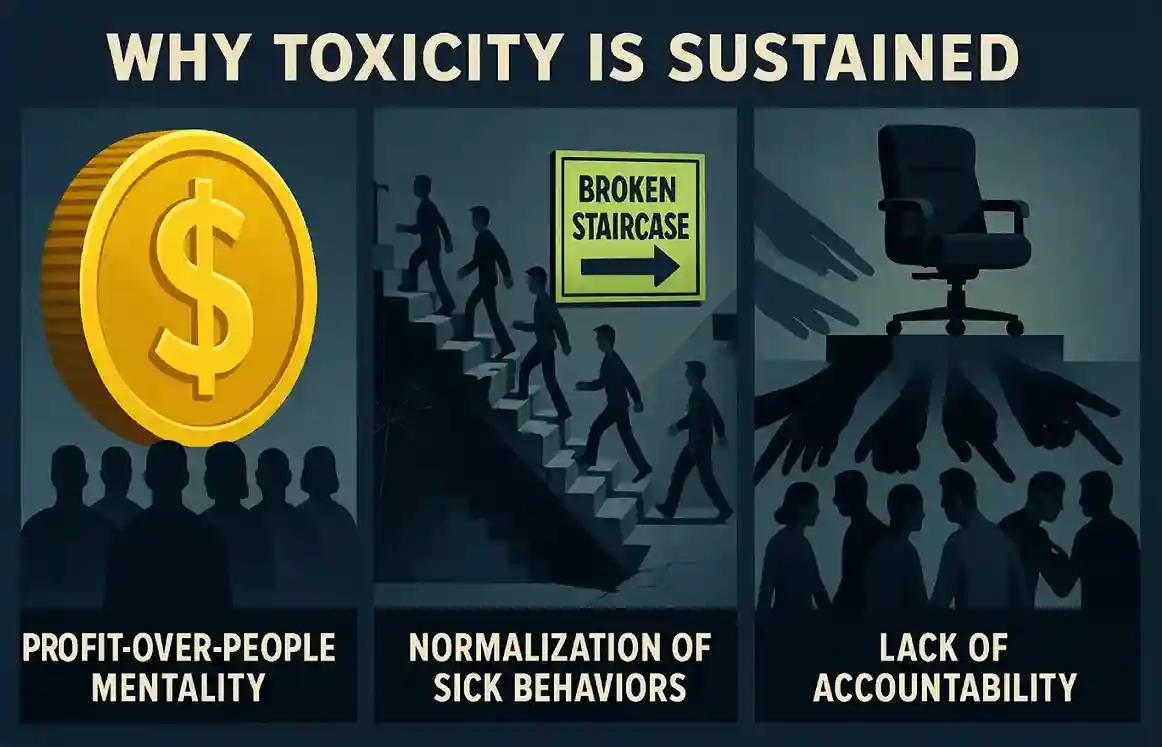
Steps to Fix or Escape a Toxic Workplace
The good news is that there are solutions to address toxic workplace culture. Employees and employers have a responsibility in building healthier environments.
For Employees: Self-Protect
-
Establish Boundaries:
Refuse when work begins encroaching on your personal space. Guard your time.
-
Seek HR or Mental Health Resources:
Leverage internal resources or outside resources to manage stress. At Emotional Ability Resources (EaR), we promote the consideration of mental health and early intervention. Our mental health course can help you immensely to overcome these issues.
-
Know When to Exit:
In some cases, the best way to survive a toxic work culture is to leave. No job is more important than your physical and mental health.
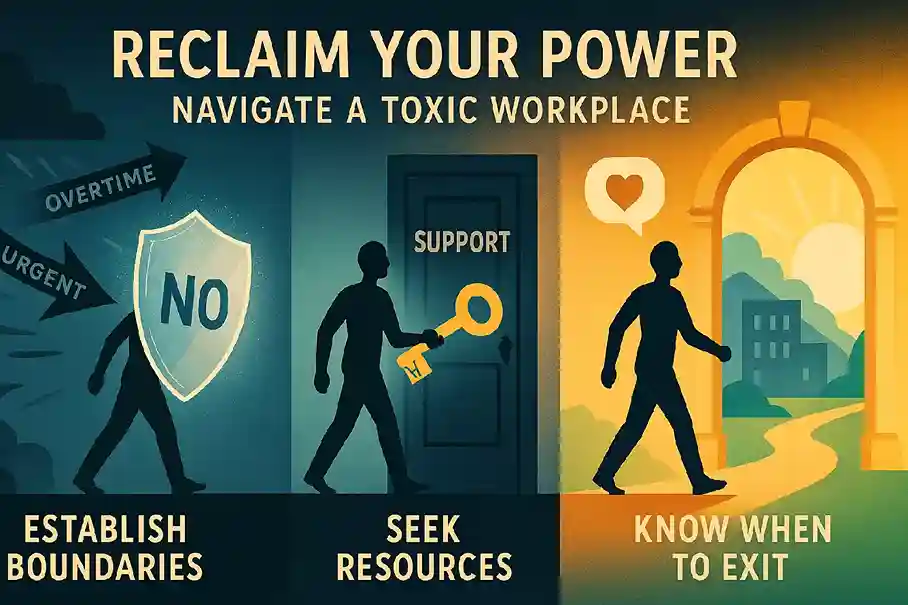
For Employers: Creating a Healthy Culture
-
Encourage Open Communication:
Employees should feel safe to share feedback without fear.
-
Recognize and Appreciate Employees:
A simple “thank you” can go a long way in reducing toxic workplace culture.
-
Train Leaders:
Managers need emotional intelligence and leadership training to avoid repeating toxic patterns.
-
Run Anonymous Surveys:
Culture surveys reveal how employees really feel, helping identify hidden toxic work culture signs.
Both sides must take responsibility, but the real change begins when employers decide that people come first.
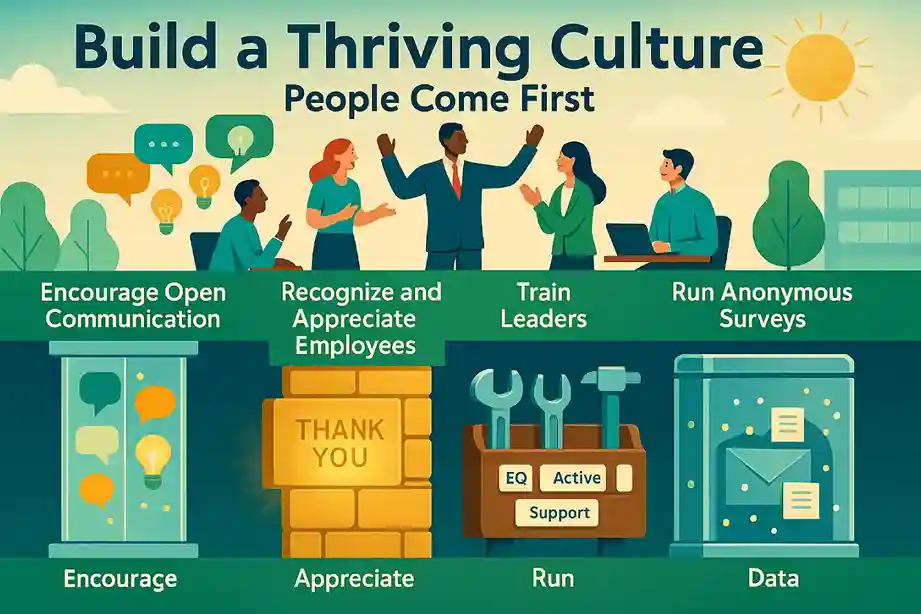
Conclusion
A toxic workplace environment doesn’t only harm employees—it damages organizations as well. From excessive turnover to minimal productivity, the price of denying toxic work culture indicators is humongous. For employees, the impact can last a lifetime, influencing health, relationships, and career self-assurance.
But the cycle may be broken. If we begin to tackle the toxic workplace culture in the open, enforce boundaries, and promote accountability, workplaces can be made safe and supportive once more.
At EaR (Emotional Ability Resources), we envision a world where nobody feels helpless in a workplace. If you’ve experienced a toxic workplace, you can share your stories—we are here to help you. Together, we can insist on healthier workplaces.
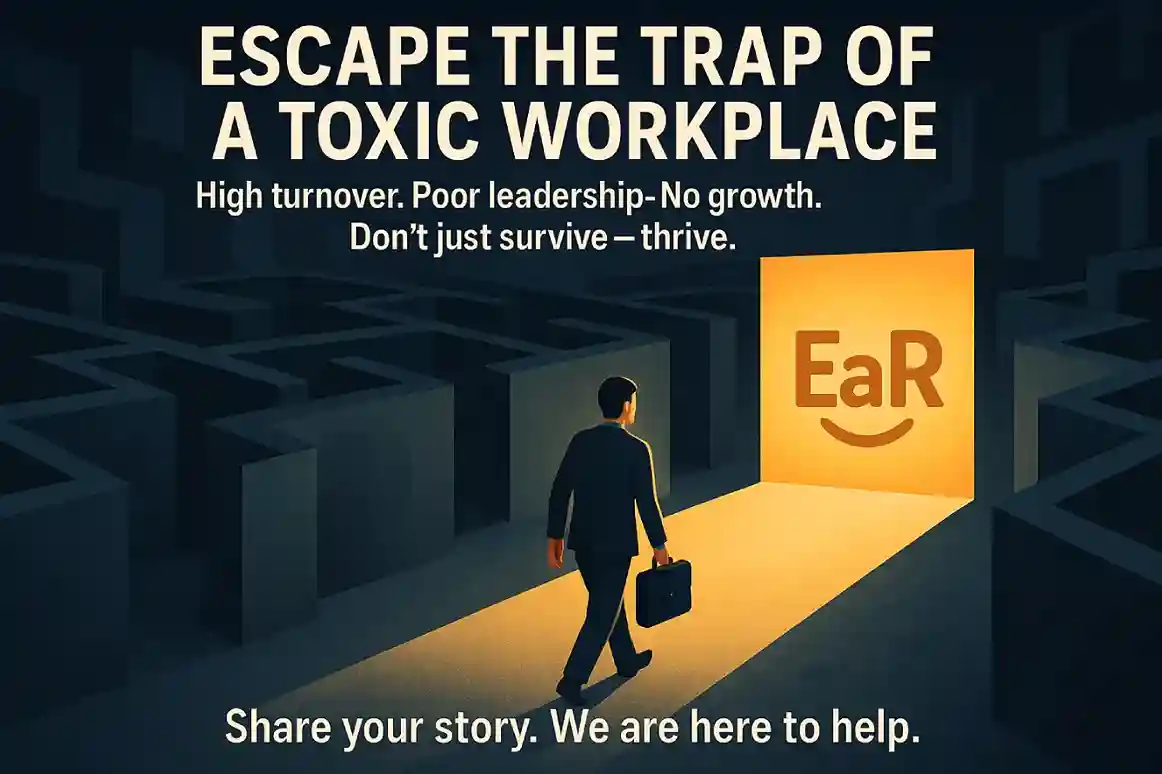
FAQs – Toxic Work Culture
-
What is a toxic work culture?
- A toxic work culture is a bad and destructive pattern at the workplace that exhausts employees both physically and mentally. It involves bullying, disrespect, and stress all the time. A toxic workplace culture doesn’t let individuals prosper.
-
What are the most common signs of a toxic workplace?
- Some of the largest indications of a toxic culture include high turnover, no work-life balance, ineffective leadership, fear, cliques, and no career development opportunities. These toxic work culture indicators must never be dismissed.
-
How does a toxic work environment impact employees?
- A toxic work environment affects mental wellbeing (stress, burnout, depression), physical wellbeing (sleep problems, chronic stress), and profession (poor productivity and disengagement). Being a part of a toxic corporate culture can have lasting effects.
-
Can a toxic work culture be fixed?
- Yes, if leaders are willing to accept accountability, encourage communication, and build supporting infrastructure, a toxic workplace culture can be fixed. Changing toxic company culture requires the dedication of management as well as workers.
-
Should I resign from my workplace if the culture is toxic?
- Quitting can be the way out if the toxic work culture is harming your health and nothing is improving. Most people leave a toxic workplace environment to protect their well-being.
-
How do I protect myself in a toxic work environment?
- Set boundaries, leverage HR or counseling resources, and practice self-care to handle toxic workplace culture. Find a better work environment to move to if the toxic workplace environment is not altered.
Need support with mental health and workplace well-being?
